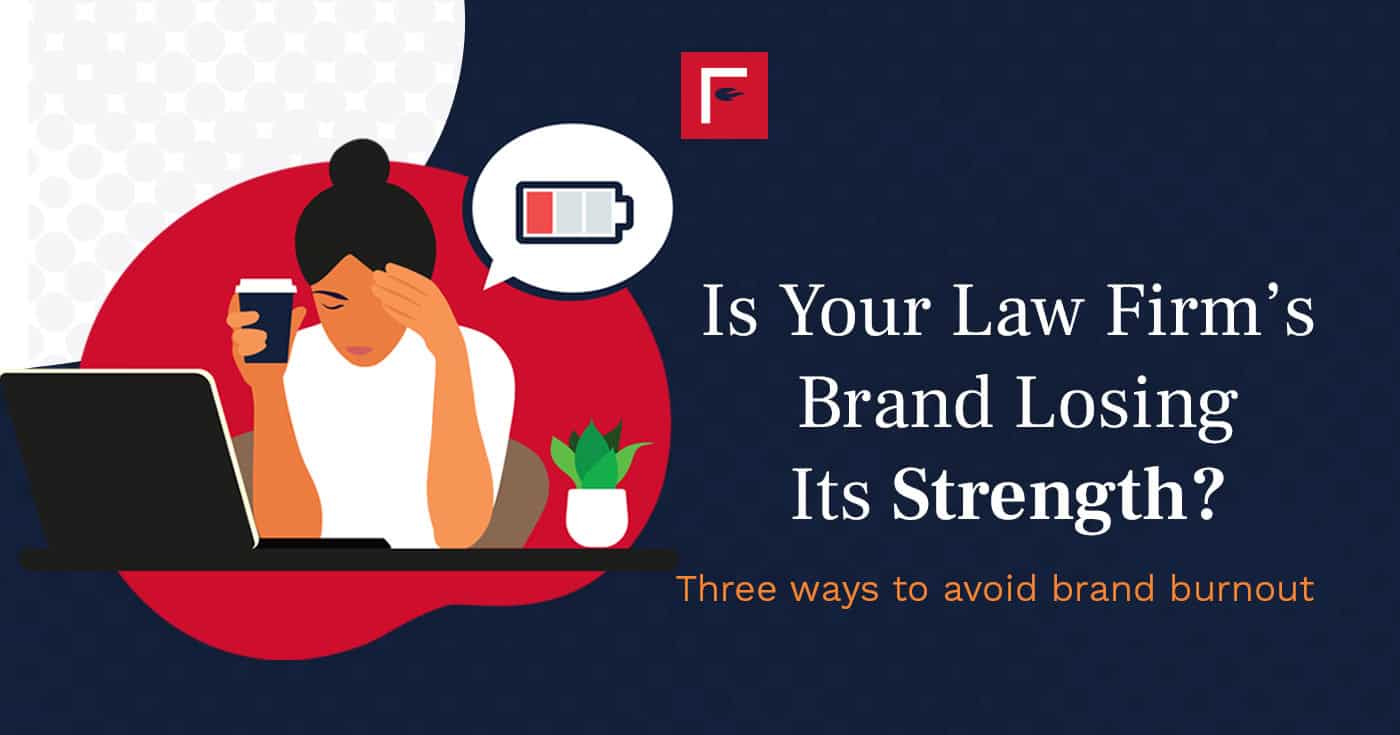With great apologies to Tolstoy, all dysfunctional law firm brands are dysfunctional in their own ways.
Maybe it’s the way that a Miami office gets tacked onto a Montana firm because two of the lawyers were friends. Maybe it’s a funky neon logo for a conservative firm best known for its 150-year heritage. Maybe it’s the bad habit of changing the color of the logo in every proposal to the prospect’s palette.
Given the human dynamics at play, yes, the specifics of legal brand dysfunction vary widely. But when examined at the macro level, we can see there are really three ways that law firms’ branding efforts flail:
One: The law firm is cast in the image of the creator.
Here, the entire “brand” is the biography of the most prominent partner, and the firm aims to coast on their laurels until they retire. (And maybe for a decent period thereafter.) While it’s true that clients often hire individual lawyers, not the law firm, if the firm intends to grow as a business, centering the entire identity around one person is dangerous.
First, it becomes exceptionally challenging to scale, especially when it comes to recruiting laterals: Not everyone will want to play a clear second fiddle to the founding partner.
Second, it can send a misleading message to the market that when clients call the firm, they will get to work with the named partner. If I call The Law Offices of Bruce Wayne, I may be miffed to learn my lawyer will be Dick Grayson.
Third, people are unpredictable and mortal things. They can decide to retire early. They can get sick. They can have personal or professional issues that expose the firm to great liability.
Instead of placing one person at the center of your identity, take a step back. What are the skills, traits and personality of that individual, and how can those be celebrated at the organization level? Why is this person hired by clients, and where else in the firm are those characteristics on display? How can this lead dog be an example of the brand instead of the brand itself?
Two: The law firm is a chameleon.
An old friend of mine used to joke that when people asked him what kind of lawyer he was, he’d respond with a smile: “What kind of lawyer do you need?”
The law firm version looks like this: In the pursuit of maximizing its client base (and revenue), the firm aims to be everything to everyone. Give us your corporate transactions, your lawsuits, your personal injury claims, your divorces, your DUIs, your patent filings yearning to breathe free…
This transcends logistics, like dozens of practice area descriptions, to the firm’s identity itself (or lack thereof). In 2024, I analyzed the “About Us” statements for the top 50 law firms. What points did they emphasize?
- Client focus: 100 percent
- Global presence: 90 percent
- Collaboration: 88 percent
- Excellence: 84 percent
- Social responsibility: 76 percent
- Longevity: 70 percent
- Innovation: 64 percent
So the majority of our top law firms are all client-centric, global, collaborative, committed to quality, socially responsible, old, and cutting-edge. BTI Consulting reports that the average corporate counsel receives an average of 22 pitches every month. How can yours stand out if you sound like everyone else?
The best legal brands are determined to be the best at providing specific services to a specific demographic – “We provide [services] to [audience]” – and disciplined at staying true to this positioning. This may cost some work in the short term, but lead to Gray Hair and Rocket Science expertise that commands premium rates and enduring client relationships.
As Taylor Swift would note, a friend to all is a friend to none. Get specific.
Three: The law firm puts style over substance.
The firm spends money on slick aesthetics and catchphrases but doesn’t dedicate the time, energy or courage to ensure there’s any “there” there.
This often manifests in a trendy, beautiful website that looks great but could represent any law firm in the country (an overlap with the chameleon concern) or makes bold promises the law firm won’t keep.
Do you promote your innovation but make me navigate a switchboard to reach you?
Do you tout a client-centric philosophy but make me wait days to hear back from you?
Does your website promise me experienced trial lawyers with decades of wins…but no evidence or examples of these victories?
Yes, your legal brand should be relevant to client wants and needs, and it should be bold enough to be ownable. But above all, it must be authentic, or you risk losing the trust of your clients and prospects. If you don’t tell me the truth about who you are, why should I believe you about anything?
There’s an added benefit to authenticity: In addition to establishing initial trust with your clients, on bad days it will help you recover from mistakes or missteps. A study published in the Journal of Business Research showed that high levels of brand authenticity – that is, clients believe your presentation – increase the likelihood of “brand forgiveness.”
Resist the urge to launch any snazzy branding without doing the hard work of determining who you are, what you stand for, and what you can meaningfully promise.
Law firm brands can be powerful catalysts for higher profitability and market share. In an environment where half of attorneys and legal marketers say business development is getting harder, it’s well worth the effort to ensure your brand rises above the common dysfunction.

